Australian Bed Bug Bites
Understanding Australian Bed Bug Bites: A Comprehensive Guide Across Capital Cities and Skin Tones
Bed bugs (Cimex lectularius) have become an increasingly prevalent pest in Australia.
They cause discomfort and inconvenience for residents and travelers alike.
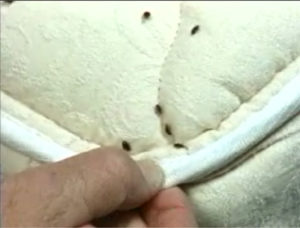
As these nocturnal insects feed on human blood, their bites can lead to a range of reactions, varying from mild irritation to severe allergic responses.
In this comprehensive guide, we will delve into the specifics of bed bug bites in Australia. We will explore their prevalence in major capital cities and examining how these bites manifest on different skin tones and colors.
Bed Bugs in Australian Capital Cities:
Bed bugs are resilient creatures that can thrive in various environments, making them a concern across all major Australian cities.
A1 Bed Bug Control Sydney is low toxic and effective, safe for children, pets and pregnant women.
Urban areas such as Sydney, Melbourne, Brisbane, Perth, and Adelaide have all reported higher instances of infestations due to increased human traffic.
Bed bugs can currently be found in hotels, homes, and public spaces nationwide.
Sydney, being a major international gateway, has faced challenges in controlling bed bug populations due to the constant influx of travelers.
Melbourne, known for its vibrant cultural scene, has also encountered issues in managing bed bug infestations in accommodations and communal spaces.
Brisbane, with its warm climate, provides an ideal breeding ground for these pests.
In Perth, the growth of bed bug incidents has mirrored the city’s economic development, while Adelaide has witnessed a steady rise in infestations in recent years.
Identifying Bed Bug Bites:
Bed bug bites are often the first sign of an infestation. Identifying these bites is crucial for prompt intervention and control. Bed bug bites typically appear as small, red welts that are often itchy. The bites are commonly found on exposed areas of the body, such as the face, neck, arms, and legs. In some cases, bed bug bites may form a line or a cluster, reflecting the insect’s feeding pattern.
It’s important to note that reactions to bed bug bites can vary from person to person. While some individuals may not exhibit any noticeable symptoms, others may experience severe itching, inflammation, or even an allergic reaction. In rare cases, bed bug bites can lead to secondary infections if scratched excessively.
Bed Bug Bites on Different Skin Tones and Colours:
Skin tone and colour play a role in how bed bug bites appear on an individual. While the basic characteristics of the bites remain consistent, the contrast against the skin can vary.
Fair Skin Tones: On individuals with fair skin tones, bed bug bites may appear as bright red or pink welts. The contrast can make the bites more noticeable, and the accompanying itchiness may be more pronounced.
Medium Skin Tones: Bed bug bites on those with medium skin tones may present as reddish-brown welts. The bites can blend in with the natural pigmentation of the skin, making them slightly less conspicuous than on fair skin.
Dark Skin Tones: Darker skin tones may exhibit bed bug bites as dark red or brown marks. The bites may be harder to detect due to the higher melanin levels, and the itching may be mistaken for other skin conditions.
Very Dark Skin Tones: On individuals with very dark skin tones, bed bug bites might appear almost black. The bites can be challenging to spot, and the itching may be attributed to other causes, potentially leading to delayed recognition of a bed bug infestation.
Preventing and Treating Bed Bug Bites:
Preventing bed bug bites involves taking measures to avoid exposure to infested areas.
When staying in hotels or accommodations, travelers should inspect the sleeping area for signs of bed bugs, such as tiny reddish-brown insects, fecal spots, or shed exoskeletons.
To minimize the risk of bites, travelers can use bed bug-proof mattress and pillow encasements.
Keep luggage off the floor, and wash clothing immediately after returning home.
Regular vacuuming, sealing cracks and crevices, and professional pest control services are effective strategies for preventing and addressing bed bug infestations.
If bitten, individuals can alleviate symptoms by applying over-the-counter anti-itch creams, taking antihistamines, and using cold compresses to reduce inflammation. In severe cases or if an allergic reaction occurs, medical attention may be necessary.
Bed bug bites are an unfortunate reality in Australia, affecting individuals across various skin tones and colours.
Understanding the characteristics of bed bug bites and being aware of preventative measures is crucial for managing and controlling infestations.
Bed bug bites continue to pose challenges in major Australian capital cities.
It is essential for residents and travelers alike to stay informed and vigilant to minimize the impact of these pests on their well-being.
This video has amassed an astonishing 29,958,891 views since March 5, 2023. That’s nearly 30 million views!
Let’s examine the transcript and review the bed bug bites:
Video Transcript & Review: “This is me subjecting my body to science. Oh my gosh. By letting a bed bug eat me. That’s my blood!
Because for four years now, I’ve been wanting to make this exact video, taking a deep dive into the fascinating world of bed bugs.
There’s a lot of fear and miss out there regarding dealing with bed bugs.
And today we’re going to debunk nearly all of them, heading out in the field with the experts, and running some experiments.
So if you could power through your squeamishness and spend the next few minutes here with me, I promise not only to blow your mind with some facts about bedbugs you definitely don’t know, but I’ll make you a bedbugs expert, knowing exactly what they look like, how not to get them, but most importantly, what to do if you do get them.
15 seconds into video:
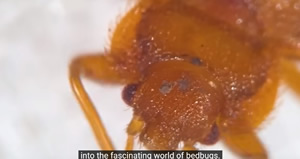
Because the punchline is it’s actually not that hard to get rid of them, as long as you ignore all the bad advice out there, and follow the surprisingly simple steps I’ll demonstrate in this video.
So let’s get right to it. And head across the country, all the way to Rutgers University

to visit their urban entomology lab, which basically means bugs you don’t want in your house, to meet with @ 1:05
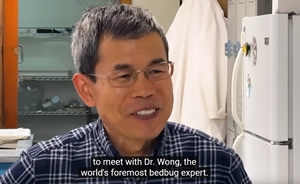
Dr. Wong, the world’s foremost bed bug expert.
Who is really Changlu Wang!
 – Extension Specialist in Entomology, from The State University of New Jersey) See: https://entomology.rutgers.edu/personnel/changlu-wang/
– Extension Specialist in Entomology, from The State University of New Jersey) See: https://entomology.rutgers.edu/personnel/changlu-wang/
changluw@rutgers.edu
Office: Thompson Hall, Room 205 Lab: Blake hall, Room 230 Phone: 848-932-9552
Fax: 732-932-9751
Education
1998: Ph.D., West Virginia University
1988: M.S., Chinese Academy of Forestry
1985: B.S., Beijing Forestry University
Bruce Gow: “I have no idea of why they refer to him as “the world’s foremost bed bug expert”.
And the main reason for visiting his lab was to run a bunch of experiments to test all the things you read online that people swear will get rid of bedbugs.
Bruce Gow: Like these “Bed Bug Killers” 
But before we got to that, I wanted to meet some of the little guys myself.
We have thousands of bedbugs here. It’s an incubator. Probably more than 20,000. Oh my gosh. This is like the Fort Knox of bed bugs.
Okay, can I pick up one of these? [Dr. Wong] Sure.
Okay, I cannot drop this, I feel like. This one probably has four or 500. Four to 500 in this. Yeah.
You want open it, or you want me to open?
(uneasy music)
I’ll open it. This is my first time ever seeing a real bedbug.
Here we go. (foreboding music) [Dr. Wong] Do you want to use gloves? Should I use gloves? [Dr. Wong] We always use gloves. I should use gloves then.
(cheerful whimsical music)
Wow. I just got to go for it. It’s like ripping off a bandaid. Oh, gross. Wow. Oh man, there’s so many of them! 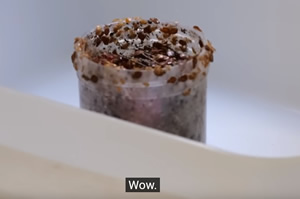
So this is what bedbugs look like. I just never knew.
Alright, so let me just cover some bedbug basics. It takes a few months for them to mature from egg all the way to full grown male and female.
And in those few months they pass through these five stages of growth. You could see the relative size here compared to a credit card.
And as humans we have five senses, but their superhuman antenna give them two extra senses, allowing them to detect both body heat and carbon dioxide being breathed out by a potential host.
Then once they get close, they use their sense of smell also on their antenna to lock down the exact final position of the person, which is all to say if you exhale your smelly warm breath on them (exhales), they get real excited.
That is crazy. They’re so stoked right now to eat. Sorry, guys.
Their lifespan is anywhere from three months to a year, and ideally they like to feed about once a week, but there’s this unsettling fact.
Without feeding, they can leave three to six months.
What? Because they just don’t move very much?
‘Cause blood is a highly nutritious material. So they can stay in the resting stage for three to six months.
[Mark] And the professor says three to six months here. But for my first of five super wild bedbug facts, if their environment is relatively cold, they can survive up to 300 days without eating anything.
They’re really flat.
[Dr. Wong] ‘Cause they’re hungry.
So when they’re hungry and they haven’t fed, they’re going to be more flat?
[Dr. Wong] Right.
I’d love to get a shot of it going from flat and brown to (slurps).
Oh, if you want to do that, put it on the arm. You could see. (Mark laughs)
Which meant I had a decision to make. Okay, I’ll do it. For science. We’re going to make a brown bed bug red. So average feeding time is about five to 10 minutes.
I feel like I’m at the red cross here. Let’s do this. Oh my gosh. Oh. Oh.
[Dr. Wong] Look, it’s started feeding.
It’s already feeding?
[Dr. Wong] Yeah, this is feeding.
[Mark] So right now I feel nothing.
[Dr. Wong] So you are not very reacting to the bites.
[Mark] The butt’s sticking up in the air now. Wow. Yeah, it’s getting bigger. And there’s just something about seeing another organism steal your blood that sharpens the focus and leaves one to start pondering some questions that probably should have been pre-pondered.
And they don’t carry diseases, right? I should have asked this-
[Dr. Wong] They don’t.
10 minutes ago. And this is my second super wild bedbug fact, they don’t actually carry or transmit any diseases, which sort of serves as an evolutionary advantage in the world of coexisting with humans, because the government doesn’t really support research to eradicate them, since they don’t really pose a widespread health threat.
When it’s done, will it start running real quick?
[Dr. Wong] It will run slowly.
‘Cause it is bigger, fatter. They’re easily crawling the walls of this dish, by the way.
[Dr. Wong] Right, so we tend to put a talcum powder in the interior walls so they cannot escape. I think we have some talcum powder.
You think? This the think is the part that I’m concerned about. Oh gosh, he’s moving.
[Dr. Wong] Moving. Okay, finished.
What do I do now?
[Dr. Wong] Nine minutes, finished. Don’t worry, I’ll put it in a dish. So nine minutes.
[Mark] Normally after I give blood, I get juice and cookies. And when we put my new blood buddy next to an unfed bed bug, gross, the difference was astounding, which made me really curious what it would look like under the microscope that was just sitting there, begging to be used.
Oh my gosh. Wow. Those are my red blood cells. Oh, are those bubbles even? No way. Life is amazing. I don’t think I reacted, right?
That’s good. So you are not as reactive as me.
So I could put even more on my arm, then.
You can try.
(“Ride of the Valkyries” by Richard Wagner)
I’m taking one in the name of science, and we’re going to load up 10 bedbugs on my arm. That’s one. Two.
We’ve also put some DEET, which they don’t like, to kind of make a barrier so they stay in the middle.
This is like Thanksgiving. There’s one down there. Can you get that one?
[Dr. Wong] Six.
[Mark] Please.
[Dr. Wong] Seven.
Oh, I can feel them bite, like if I don’t look.
[Dr. Wong] Nine, 10.
[Mark] Okay.
[Dr. Wong] 11.
I said 10, Professor.
[Dr. Wong] One bonus.
Oh, that one’s turning red already. Could you imagine just, some people who have a bad infestations every night? Like, this is what their leg looks like.
[Dr. Wong] They could get thousands of bites.
A night?
[Dr. Wong] Yeah, a night.
They’re getting bigger and bigger by the second. Oh, you better not start mating on me.
[Dr. Wong] This one finished.
Okay, I don’t like your attitude. Let’s get rid of this guy. Professor, professor!
(uneasy music)
Professor. As they finish, I vote them off the island. I don’t want him crawling up my arm. He is full, and you’re off the island. Oh, and you’re off the island. And he’s done. Peace. Down to two.
This is like a MrBeast’s challenge. Last to leave the arm wins a gallon of rabbit blood.
Oh, we have a winner! I think it’s dead. Oh, there he goes. And so once again, by way of comparison, here are the 11 bedbugs that just spend some quality time with me, versus 11 unfed bed bugs of similar ages.
All right, so they’re all done feeding. There was 11 total. It took about 10 minutes, but I would have no idea they just made a meal out of me.
Like, I felt a tiny prick on one of the 11. But other than that, like, it’s a tricky little parasite. And I’m not alone.
Half of all people have no reaction to a bedbug bite, whereas the other 50% of the population will have some kind of reaction to their saliva that will look something like this in the morning.
So having survived the bloodletting, it was time to run our experiments and head into the vault, sealed by the huge wooden door.
All right, so we’re here in the bedbug test chamber and we’ve set up a bunch of tests in here. So for example, in these two we have these dishes basically that can climb up the wall.
Then they get stuck in this trough. It’s too slippery to climb out. Inside each of these troughs, there’s a little vial, this good smelling stuff that to bedbugs smells like a human.
So they’re going to go to either one of these. So this one in this corner is a control, whereas in this corner, we have an ultrasonic pest repeller.
So we want to see if this actually does anything or not. So at the end of 24 hours, we’ll come back, we’ll count the number of bedbugs in this dish versus this one.
If there’s way more in the control, then this is actually doing something. But if there’s the same number of each, then this is nothing more than a gimmick to steal your money!
In addition to testing the ultrasonic bedbug repeller, we use an identical test setup to investigate some of the other supposed remedies to bedbugs commonly found online, including dryer sheets, moth balls, baking soda, and essential oils.
And just for the sake of my curiosity, we also placed this vertical post in a ditch.
For my super wild bedbug fact number three out of five, the professor told me that bedbugs are attracted to vertical objects because if you think about it, humans generally sleep at the highest elevation in any given room.
So their logic is just crawl up any vertical object you see until you eventually find a warm-blooded meal at the top.
So this is to mimic a bed post. And we do have an attractant in both trays. The hypothesis is that they will actually be more bedbugs in this tray, because you have that vertical post.
And if that turns out to be true, that’s pretty wild.
And in addition to those six tests, we set up some residual effects tests where we treated a surface with each of these three products you could buy at the local hardware store, specifically marketed the kill bedbugs.
And then finally we tested this fogger spray, also specifically designed for killing bedbugs, Godspeed, little fellas.
And then we set it off, leaving three dishes of exposed bedbugs at different spots in the same room.
And so as a final step, we placed the bedbugs at the center of each of the six trays in the bedbug vault, and we were underway.
The experiment’s all set up, we’re going to close the wooden vault, do a final bedbug check, let her run.
And now that the experiments were running, Professor Wong invited us to join him on a research visit to an apartment building nearby that had been receiving frequent reports of bedbugs.
So him and his team were going out to collect some samples, and to try out some new treatment approaches. And after entering the apartment, it didn’t take long to find our first culprit. The bedbug here.
[Mark] Which the professor told me was dead.
[Dr. Wong] He’s dead, yeah.
[Mark] When in fact, he was just a good faker.
By the way, this is a bit of a warning that some people might find the next few minutes a little gross. So skip ahead a bit if you just want to see the results of the test.
It turns out one in a thousand houses or apartments have bedbugs in the US today, which might sound bad, but for my super wild bedbug fact number four, before 1950, it was one in three houses that had bedbugs.
Hence the origin of the saying, “sleep tight, don’t let the bedbugs bite.”
Midnight to 3:00 AM is typically their most active time, and it takes a little more than 10 minutes to get to you, a little less than 10 minutes to feed, as you saw with my arm, and a little more than 10 minutes to get back to their hiding spot.
If you’re suspicious you’re sleeping on a mattress with bedbugs, just check under the mattress in the corners and look for bedbug poop stains, like this. Just remember, this is more of an extreme case, so yours might not look quite this bad.
These two here are actually mating, which we saw quite a bit in the lab too, which actually leads to my final super wild bedbug fact, and buckle up, ’cause this one’s a doozy.
Typically in nature, in order to make a baby of a thing, you have a male, which, let’s say, is represented by this plug and a female, which let’s say is represented by this outlet. And if you plug in the cord, you get an adorable little baby. And just like in pretty much all the rest of nature, female bedbugs totally have an outlet, except male bed bugs prefer to take this approach.
(hammer bangs)
The scientific term for this is called traumatic insemination. And just like my wall is now damaged, it actually damages the abdomen of the females, leading to significantly shorter lifespans.
Researchers aren’t exactly sure why they’ve evolved to use this alternate approach, but it must offer some kind of overall advantage, leading females to lay up to five eggs every day.
And you can see their handiwork here on that same chair we saw before.
Like all insects bed bugs have an exoskeleton. So what you’re seeing here is as they grow bigger from stage to stage, they moult, and leave behind their old exoskeleton.
How bad is this infestation relative to most you see?
[Dr. Wong] Yeah, moderate.
[Mark] Moderate?
[Dr. Wong] Heavy ones, you can see tens of thousand bugs.
[Mark] To prove his point, he later sent me a video of this house with the charming exterior, which they had treated a few months ago. The truly staggering part about this place though, was that only one person lived there. He just wasn’t allergic to their bites, and he just learned to live with them.
Back at our thankfully moderate infestation, the professor and his team took some samples for study later and started treating the room. Unsurprisingly, the apartments both above and below this one also had some minor bedbug issues.
So if you’re working to get rid of bedbugs in your apartment, just make sure you let your landlord know what’s going on, in case the unit next to you happens to be the primary source, to prevent you from getting a second wave.
And as we were wrapping up, the professor dropped a bit of a bombshell about how it was pretty likely we had at least some bed bugs on us at this point.
Even if you can see they, you may not see like?
[Dr. Wong] Yeah, they can, they can.
[Mark] Which is why he always plays it safe.
[Dr. Wong] Well, actually I have spare clothing. I always, when I go home, I always wash it.
[Assistant] These shoes, only for bed bug shoes.
What? Nobody told us any of this! We unfortunately, were not told to bring, nor did we have a spare change of clothes. What have I done?
So we do the next best thing by steaming ourselves, which instantly kills the bedbugs from the heat. That is, until the professor decided he should check his shoes, and found this.
(tense suspenseful music)
Is it alive?
[Dr. Wong] Yeah, he’s alive.
Oh my gosh, no way! At which point, just steaming ourselves seemed wildly insufficient. Because apparently it’s illegal in the state of New Jersey to just publicly chill in your underwear, me and my crew hit up the local Goodwill to wait things out in style.
So the next day, we headed back to the lab to check on our results in our freshly laundered clothes. But can I just take a moment to say it’s the best to hang out with bug people ’cause they have cool door knockers and interesting magazine subscriptions.
The only downside being they like to study more than just bedbugs.
Aw, it smells! This is where they keep the cockroaches. And as you might recall, I really, really don’t like cockroaches.
(Mark shrieks)
Shamo, get it off me!
[Dr. Wong] Each one has thousands of roaches.
Wow. That’s so disgusting. Aw, these are the kind I hate. These are the American, largest ones in the US. Their freaking antenna. That’s the worst sound in the world.
Wait, they have wings?
[Dr. Wong] Yeah, they have wings. In Florida they can fly too, but here temperature is cold.
So if it was a little warmer in this lab, they would fly?
[Dr. Wong] They will fly.
Oh my God! Okay, let’s get out of here. So we made our way back upstairs, where I felt much more comfortable. Time to check the results.
So this ultrasonic pest repeller did nothing. If anything, it attracted them. We had 120 bedbugs with the ultrasonic sensor, over here for the control, we had 101. Clearly that does nothing to repel bedbugs. And of course, that confirms our hypothesis, considering bed bugs don’t even have ears. Not to mention that apartment we visited had a couple plugged into the wall themselves. So definitely save your money on that one.
Next up was the vertical post test. That is wild. There are so many over here by the vertical post, literally none over here on the other side. And the remaining four tests all had similar results.
So I’ll just show the average, which was around four bed bugs trapped in the dish that was surrounded by either the dryer sheets, moth balls, baking soda, or essential oils,
with around 26 bugs trapped in the control.
These results clearly show bedbugs prefer to avoid these four items because they all have a really strong scent, and bedbugs have a really good sense of smell, but they don’t do anything to kill the bedbugs. According to the professor, these act more as an annoyance, but the bed bugs would gladly walk over them if it was between temporarily having to deal with the smell and starving to death.
As for the residual effect test with the pesticides specifically engineered to kill bedbugs, it was even worse news.
The spray aerosol and fogger bed bug killers all killed about 12% of the bedbugs after 10 days. And before you go all glass half full and think, well, 12% is better than nothing, our control, which was just water, also had a 12% mortality rate.
So it’s literally not better than nothing. According to Professor Wong, part of the reason for these terrible results is that many strains of bed bugs have developed immunity
to a lot of these chemicals over the years. And he thinks in 10 years, all bed bugs will be immune.
And this sort of makes sense, because they’re constantly undergoing
localized mass extinction events, when people try and spray them, and only the most hearty minority survive each time, and pass on their increasingly pesticide-resistant genes.
There were some chemicals that on average were effective in killing about 50% if you sprayed the bedbugs directly. But if they were just hanging out in the area you sprayed later, it’s once again the same as water.
The problem with this is you’ll only ever see a small portion of the bedbugs you actually have. So direct spray pesticides are sort of pointless if your goal is to eradicate the entire population.
That’s the bad news. Now here’s the good news. There was a superstar in our test, and that was the diatomaceous earth, with a nearly 90% mortality rate after 10 days.
This stuff is just crushed fossilized shells from tiny prehistoric aquatic organisms called diatoms. The key here is their shells were silica based. And silica is what you see in those packages you see sometimes in packages that you’re not supposed to eat.
Silica’s useful because it absorbs moisture incredibly well. For bed bugs, this is a bummer because when they walk by it, it sticks to their exoskeleton, as you can see here under their microscope. And they die from dehydration in a matter of hours to days.
Oh, we’re eating lunch right after this, which is a bad idea in hindsight. The best part here is they end up transferring this to each other back in their hiding spots.
And since every organism needs water to live, they can never develop immunity to it.
There’s also one more bit of really good news, and that’s bedbugs die at 122 degrees Fahrenheit. Like, instantly. This is also 100% effective, and there’s no way to build immunity to it.
And a really easy way to get a bed bug to 120 degrees as we demonstrated earlier, is with the clothes dryer or a steamer.
Or if you want the nuclear option, you could work with professionals to heat your entire house to that temperature.
Now that we have a better sense of what does and doesn’t work, let’s talk about what to do if you actually get bedbugs.
And the first thing to point out is the best way to get rid of them is to not get them in the first place. And the most common way people get bed bugs is through traveling.
So when you get to your room, here are three simple tips.
First, pull back the bedsheets and check the corners of the mattress, now that you know what to look for.
Second, don’t set your suitcase on the bed or the floor. Instead set it on the luggage rack. Or for some reason you feel like you need to be extra cautious, the bathtub.
And third, don’t put your clothes in the hotel drawers or leave them just lying around. Whatever you’re not wearing should just stay in your luggage or hanging up on the hangers.
All right, so you were super careful when staying in the hotel on travel, but then you got back and bought that couch on Craigslist for a smoking deal, and now you got bed bugs in your home.
In Professor Wong’s experience, you don’t actually need to spend $4,000 hiring an exterminator as long as you know there’s three steps for defense and three for offense.
First up for defense, you put your bed in a bag. You can buy these mattress and box spring encasements off Amazon, and once you zip them around your bed, basically seal in any bed bugs currently living inside.
Just remember they can live up to 300 days. So you can’t take it off for a year. And they not only trap in any current bedbugs, but they also remove all the mattress hems and clever hiding spots they love to use.
Number two, your clothes dryer. Wash and dry your clothes and sheets at least once a week, more often doesn’t hurt. Importantly, you want to wash them in hot water and dry them on the highest heat setting because it’s impossible for them to survive this.
Number three, simplify de-clutter. Simplify the room to take away any hiding spots by putting clutter into plastic bags or totes. They aren’t interested in clean clothes,
but dirty clothes smell nice to them. So it’s good to also store those in a plastic bag or tote until you’re ready to wash them. Also, move your bed away from the wall,
so the only way they can get on the bed is by climbing up the legs.
So that’s the three steps for defense. Now, for the offense.
Number one, vacuum. Make sure you vacuum the bedroom floor and the bed area once a week. Just be sure to empty anything you’ve collected into a bag, and into the trash.
And number two, we’ve got diatomaceous earth, which, as you recall, was the superstar from our tests. You should definitely apply this around the bed. But it’s especially useful in penetrating the cracks and crevices close to the bed, including around and behind power outlets.
The key is applying just a light dusting, like this. If you leave it in clumps, it will actually backfire and not be as effective, ’cause they’ll just navigate around it.
And finally at number three, we’ve got steam. A simple clothes steamer like this will do the job. And I think it’s great that with all the years and money spent on creating all these synthetic pesticides, the two most effective methods for killing bed bugs are just crushed up rocks and really hot water, which are by far the two most simple and natural.
Use the steamer all around your bed once a week, but if you find something you want to treat, you can’t steam or put in the dryer, you can put it in a bag and then put it in the freezer for three days and that will also kill them.
Professor Wong said, if you have a small infestation and you just noticed them, then using these three defensive and offensive steps will totally take care of the problem
without needing to spend money on an exterminator. However, if you’ve got a lot of bed bugs and you’ve had them for a long time, then getting professional help is probably a good idea.
The entire house heating option takes about eight hours, and it’s the most sure fire way to totally eradicate every bed bug, along with any eggs all at once. But it can cost up to $4,000, depending on the size of your place.
Now that you’re playing both defense and offense, and things are looking good, stick these traps under the bed legs so you can monitor and have some peace of mind that they are, in fact, totally gone.
All right, that’s it. You’re a bed bug expert now. I’m hopeful that at least some of you’ll have a renewed appreciation for the fascinating natural world around us, and everyone else can just congratulate yourself on making it to the end while soaking in a bathtub of Listerine.”
Australian bed bug fun facts
Here are some fun facts about bed bugs specifically related to Australia:
1. Not exclusive to Australia: Bed bugs are found all over the world, including Australia. They are a common pest in many countries and can infest homes, hotels, and other buildings.
2. Increase in Australia: In recent years, Australia has seen a significant increase in bed bug infestations, particularly in major cities like Sydney and Melbourne. This is likely due to increased international travel and the bugs’ resistance to some pesticides.
3. Small and sneaky: Bed bugs are small insects that are about the size of an apple seed, making them difficult to spot. They are nocturnal and hide during the day in cracks, crevices, and bedding.
4. Not known to spread diseases: Unlike some other pests, bed bugs are not known to transmit diseases to humans. However, their bites can cause itchiness, skin irritation, and allergic reactions in some individuals.
5. Attracted to warmth and carbon dioxide: Bed bugs are attracted to the warmth and carbon dioxide emitted by humans and animals, which is why they are often found in beds and bedrooms. They feed on human blood, usually at night while people are sleeping.
6. Resilient pests: Bed bugs are resilient and can survive for several months without feeding. They can also withstand a wide range of temperatures, although extreme heat or cold can be effective in killing them.
7. Hitchhikers: Bed bugs are excellent hitchhikers and can easily latch onto luggage, clothing, or other belongings, allowing them to spread from place to place. This is why they are often found in hotels, hostels, and other places where people frequently travel.
8. Challenging to eliminate: Bed bug infestations can be challenging to eliminate. Professional pest control methods often involve a combination of thorough cleaning, vacuuming, heat treatments, and insecticide applications.
Remember, if you suspect a bed bug infestation in your home or accommodation, it’s best to contact a professional pest control service like A1 Pest Control to address the problem effectively.
Remember to call Bruce on 0417 251 911 or email him at bruce@a1pestcontrol.com.au if you have a problem with bedbugs.
Sydney Pest Control Services
Common pests treated within this suburb include general pests such as common cockroaches, ants, webbing spiders, and miscellaneous vermin and services such as ticks, silverfish, carpet beetles, German cockroaches, fleas, rats & mice (rodents), termites (white ants), bees, wasps, pest reports, Pre-Purchase Inspections (PPI), property inspections, thermal imaging, termite reports, pre-slab treatments, bed bugs, miscellaneous pests, maggots, disposal of dead animals.
Full Service Pest Eradication Programs
Our team offer a 100% guarantee to keep your home or business free of bugs and vermin.
At A1 Pest Control, we believe in premium service and advancement. That is why we use cutting edge services that are low-toxic or non-toxic and safe for use in your property.
If you need custom inspections or pest reports, we are happy to supply them as well.
Throughout the last 40 years, we have built a solid track record for keeping our clients satisfied and pest free.
Remember to call Bruce on bruce@a1pestcontrol.com.au if you have a problem with bedbugs.
Sydney Pest Control Services
Common pests treated within this suburb include general pests such as common cockroaches, ants, webbing spiders, and miscellaneous vermin and services such as ticks, silverfish, carpet beetles, German cockroaches, fleas, rats & mice (rodents), termites (white ants), bees, wasps, pest reports, Pre-Purchase Inspections (PPI), property inspections, thermal imaging, termite reports, pre-slab treatments, bed bugs, miscellaneous pests, maggots, disposal of dead animals.
Full Service Pest Eradication Programs
Our team offer a 100% guarantee to keep your home or business free of bugs and vermin.
At A1 Pest Control, we believe in premium service and advancement. That is why we use cutting edge services that are low-toxic or non-toxic and safe for use in your property.
If you need custom inspections or pest reports, we are happy to supply them as well.
Throughout the last 40 years, we have built a solid track record for keeping our clients satisfied and pest free.
Our Pest Management Services Include:
- Spiders
- Ants
- Cockroaches
- Termites (White Ants)
- Rats & Mice (Rodents)
- Pest Reports and Termite Inspections
Our Clients Include:
- Warehouses And Offices
- Commercial And Industrial Sites
- Restaurants And Dining Areas
- Childcare And Early Learning Centres
- Property Management
- Healthcare Facilities
- Government, Schools And Education


A Local Pest Control Service You Can Trust
We are Commercial Pest Control and Termite Treatment experts. We also have experience and accreditation in Tick Control, Rodent Pest Control and Termite Baits. Need urgent help with Termite Inspections Sydney or Flea Treatment Sydney?
Please call Bruce, a termite expert on 0417 251 911 for any questions about termites or emailing bruce@a1pestcontrol.com.au
Our Team at A1 Pest Control are proud to be a 100% Australian-owned service, which is a rarity in our sector. For more than 40 years, we have offered top quality pest control solutions in the Angus area.
We take enormous enjoyment and pride in providing our nearby community and providing a high-quality pest control service that is effective, budget-friendly, and risk-free for adults, children, and pets. If your residence or business needs pest control services, contact us and check out our 100% pest-free assurance.
Termite Control Sydney
Termites, or white ants, are one of the most typical types of pests that you can experience in the Angus area.
Termites form colonies and feed on wood, causing severe residential or commercial property harm. They are one of the most harmful types of pests that can invade your home, and they can considerably reduce its property value or even make it un-liveable.
Always keeping your home termite-free and reducing the risk of possible infestation requires an expert solution.
We will perform thorough termite inspections and use effective treatment services.
Protect your home or business and keep them termite-free by calling A1 Pest Control. Our team are the Termite Specialists.
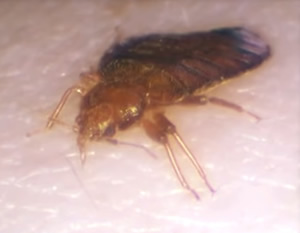
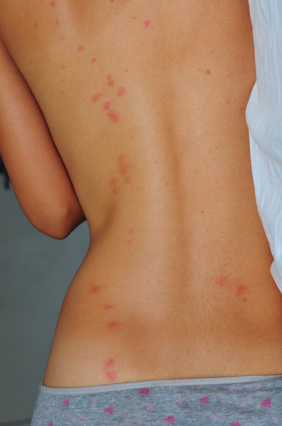

Termite Inspection Sydney
The threats of a termite invasion are very real. On average, 1 in 3 homes in Sydney will suffer considerable damage due to a termite infestation, and almost 60% of all properties in Sydney will at one point have a termite problem.
The only way to protect against a termite infestation is a thorough termite inspection conducted regularly by professionals.
Termite colonies are notoriously difficult to spot and might cause substantial damage before being discovered.
A regular termite examination at least every 12 months is important for keeping your house termite free. In high risk areas examinations should happen each 6 months.
When is the last time you checked your property or organisation for termites? Trained specialists at A1 Pest Control Angus specialises in termite control and inspections.
Our team performs highly accurate thermal termite assessments.
You can expect the same well trained technician turning up all the time, so you don’t have to explain everything all over again to unfamiliar technicians.
Give us a call, and we will be happy to discuss your unique circumstance.
Remember, prevention is the best termite control option.
Termite Fumigation
The layperson might refer to the term “fumigation” as a termite or even a general pest treatment. This is not technically correct.
It may be correct to call a gassing a fumigation, but this is rarely done these days.
What might you do if your property is already at the mercy of termites?
There are a number of approaches of managing a termite problem, such as baiting, foaming, or soil barriers.
A fumigation for termites is only done for Drywood termites found overseas or in the northern areas of Australia.
It is important to note that the kind of treatment used depends on the type of termite infestation. Not all approaches work on all kinds of infestation.
End of Lease Flea Treatment Sydney
If you own domestic or commercial building, it is essential to carry out proper pest control, pest inspections once the lease ends. It helps avoid damage to the residential or commercial property, and it maintains its worth.
One of the most typical types of pests in domestic buildings are fleas.
The main sources of a flea infestation are in door pets like dogs and cats.
Pets can quickly pick up flea larvae, or grown fleas, while outdoors.
They then rapidly transfer them into the home: infesting bed sheets, carpets, rugs, and other parts of the property.
If your domestic or small business property needs end of lease flea treatment, never hold back to get in touch with A1 Pest Control.
The Importance of Pest Control
Pest control is vital in Angus, NSW, for several reasons:
Preserving Biodiversity: The region’s rich biodiversity is a testament to its natural beauty. Invasive pests, such as rabbits, foxes, and feral cats, can disrupt local ecosystems by preying on native wildlife, threatening endangered species, and damaging habitats.
Protecting Agricultural Interests:
Pests like termites, rodents, and spiders can cause local havoc with the residents. Effective pest control is essential for maintaining a thriving community.
Preventing Structural Damage: Pests like termites can wreak havoc on both residential and commercial buildings. Without proper pest control measures, these destructive insects can cause substantial property damage.
Methods of Pest Control
In Angus, NSW, a combination of methods is employed to manage pest populations:
Biological Control: This approach involves introducing natural predators or pathogens to control pest species. For example, the release of predatory insects to manage crop-damaging pests.
Chemical Control: The use of pesticides is a common method to target pests. Careful application and adherence to safety guidelines are essential to minimize environmental impact.
Traps and Barriers: Installing termite traps and barriers is a non-chemical approach to pest control. This method is often used to manage termites, rodents, insects, and other pests.
Integrated Pest Management (IPM): IPM is a holistic approach that combines various pest control methods. It involves monitoring, prevention, and targeted intervention to minimize the impact on non-target species and the environment.
The Role of the Community
Community involvement is crucial for successful pest control in Angus, NSW. Local residents, businesses, and conservation organizations should work together to create awareness, share knowledge, and participate in pest control efforts. Reporting pest sightings, following guidelines for waste disposal, and participating in pest management programs are essential for maintaining the region’s beauty and biodiversity.
Angus, NSW, is home to a range of remarkable landmarks and natural beauty. To ensure the preservation of these treasures, pest control is a vital component of responsible land management.
By adopting a multi-faceted approach, including biological, chemical, and non-chemical methods, and through the active involvement of the local community, Angus can continue to thrive as a haven for both its residents and the natural world that surrounds it.
Environmentally Friendly, Low Toxic and Non-Toxic Solutions
A1 Pest Control uses the latest techniques when carrying out pest inspections and treatments, utilising low and non-toxic insecticidal remedies that are safe for staff and pets.
What is the use of successful pest control if it renders the home or office unsafe?
Our team make your safety our highest possible concern, and we do so in a way that is environmentally friendly.
A1 Pest Control has rigorous methods and processes that will safeguard your health. Pest Control in Angus: Safeguarding Landmarks and Urban Spaces
Angus, a vibrant suburb in Western Sydney, Australia, is known for its rich history, diverse culture, and thriving urban landscape. However, like any populated area, it faces challenges in managing pests that can disrupt the harmony of its landmarks and urban spaces.
The importance of pest control in Angus
Pest management has significance in safeguarding important local landmarks, and how effective pest management strategies contribute to the preservation of this beautiful community.
Understanding the Pest Challenge in Angus
Angus’s favorable climate and urbanization have created an attractive environment for various pests, including rodents, insects, and termites.
These pests can infiltrate commercial, residential, and historic areas, posing threats to human health, property integrity, and the preservation of local landmarks.
Implementing Integrated Pest Management (IPM) Strategies
To combat pest infestations effectively, Angus relies on Integrated Pest Management (IPM) strategies. IPM emphasizes a holistic approach, combining preventive measures, targeted treatments, and ongoing monitoring to minimize the use of harmful chemicals while effectively managing pests.
Preventive Measures:
Prevention is the cornerstone of IPM. Regular inspections and maintenance can identify vulnerabilities in buildings and urban spaces, providing an opportunity to address potential pest entry points. Additionally, educating the public about pest prevention practices can encourage proactive measures within the community.
Targeted Treatments:
When pest infestations are identified, targeted treatments are employed to address the specific issue without affecting non-target species. This involves the careful application of pest control products and techniques by licensed professionals. Blacktown authorities work closely with pest control companies to ensure safe and efficient treatments.
Ongoing Monitoring:
Pest control is an ongoing process that requires continuous monitoring. Regular follow-ups and inspections help gauge the effectiveness of implemented measures and identify new pest threats. Adaptive management ensures that pest control strategies are constantly refined to match the changing pest dynamics in the area.
The Role of the Community
While professional pest control services play a crucial role in managing pests, the cooperation of the Angus community is equally important. Individuals can contribute to pest control efforts in several ways:
Reporting Pest Sightings:
Reporting any signs of pest infestations in public spaces or residential areas helps authorities identify and address emerging pest issues promptly.
Adopting Good Hygiene Practices:
Proper waste management, storing food in sealed containers, and maintaining clean living spaces discourage pests from settling in residential areas.
Looking for “Pest Control Near Me”?
In case you are after pest control Angus (or neighbouring areas) and you need pest management services, do not hesitate to call or email the team at A1 Pest Control. We also work in the Baulkham Hills and Hills District areas.
We are a family business with more than 40 years of expertise in professional pest control services.
You may rest easy that we have been working in your neighbourhood for decades and live close by.
Our local knowledge of pest activity helps us identify the ideal methods to rectify your pest problems safely.
So, if you are looking for ‘pest control near me’, search no further.
A1 Pest Control offers a complete spectrum of pest control services from termite, ants, and rodent treatment, to end of lease flea treatments, pest reports, and inspections.
Find out why A1 Pest Control is one of the most effective pest control companies in the Western Sydney region.
- Government, Schools And Education
Please be aware that some pest management firms advertise that they work in the area, but actually are based much further away.
Our address is only 14 minutes from the centre of Angus.
Bruce Gow
A1 Pest Control
0417 251 911
bruce@a1pestcontrol.com.au
Opening and Closing Times:
Monday 8am–5pm
Tuesday 8am–5pm
Wednesday 8am–5pm
Thursday 8am–5pm
Friday 8am–5pm
Saturday 10am–2pm
Sunday Closed


